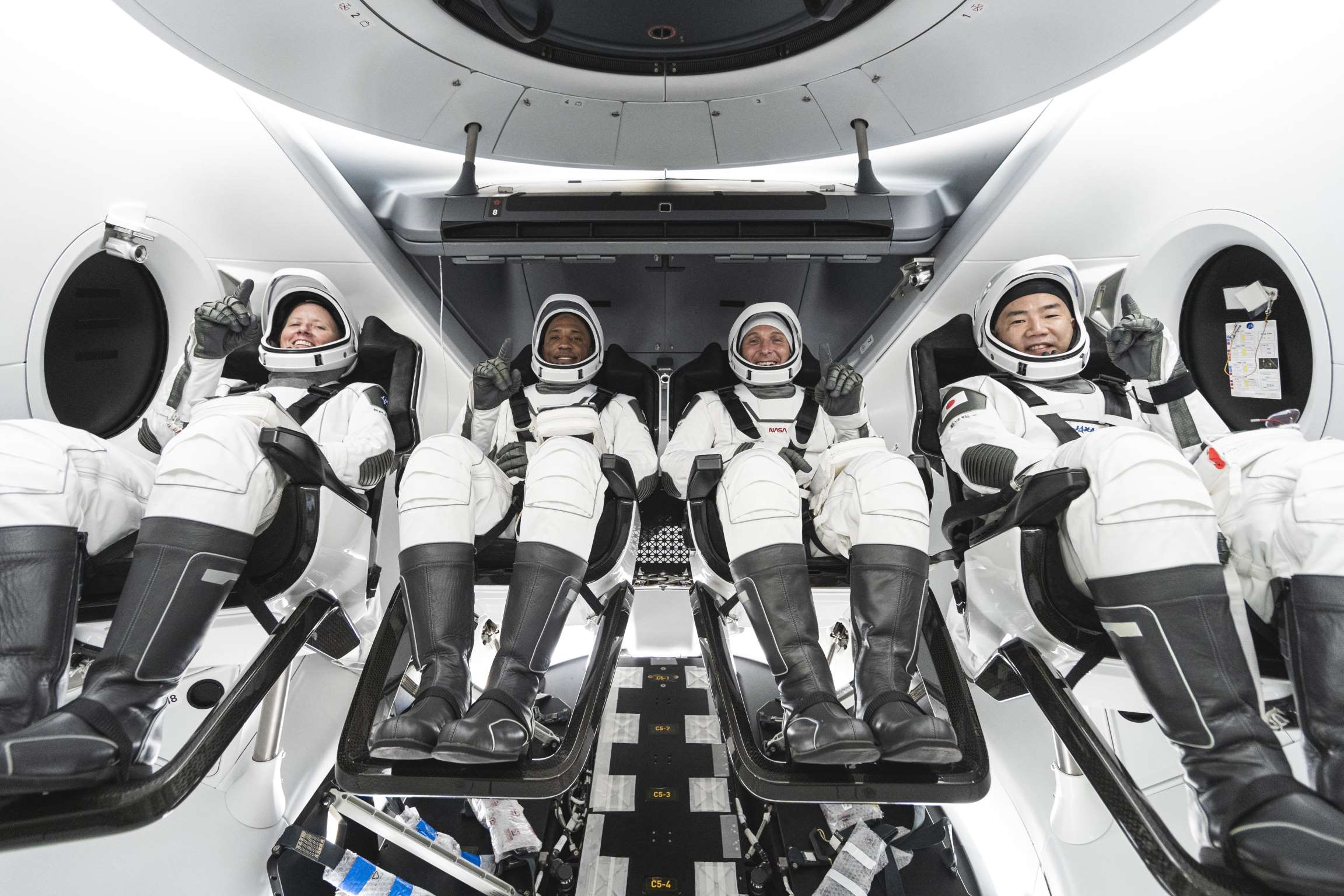SpaceX set to launch first fully-crewed ISS mission Saturday
Elon Musk's rocket company had engine trouble in October.

We're likely just days away from the first fully-crewed SpaceX launch.
Elon Musk's company has launched two people into space to date: NASA astronauts Douglas Hurley and Robert Behnken, who rode to the International Space Station May 30 aboard a Crew Dragon capsule mounted on a Falcon 9 rocket. That test flight, termed DEMO-2, marked the first-ever commercial crewed launch, and the first launch from American soil since the end of the Space Shuttle program in 2011. But it was a test flight, with just two astronauts aboard, lasting just 64 days with most of that time in zero-gravity spent on the International Space Station (ISS). On Nov. 14, if all goes according to plan, four astronauts will take a Crew Dragon to the ISS and remain on the space station for six months. It will mark the beginning of the era of practical commercial spaceflight.
The mission, termed CREW-1, will deliver four of the seven members of Expedition 64 to the ISS: NASA astronauts Michael Hopkins, Victor Glover and Shannon Walker, as well as Japanese astronaut Soichi Noguchi. Expedition 64 is the term for this 64th group of people to inhabit and work on the ISS long term.
The four began quarantining Oct. 31, a standard pre-launch move with added significance in the age of COVID-19, and arrived at Kennedy Space Center in Cape Canaveral, Florida, for final preparations Nov. 8.
Related: Here's every spaceship that's ever carried an astronaut into orbit
(The other three Expedition 64 members, Russian cosmonauts Sergey Ryzhikov and Sergey Kud-Sverchkov, as well as NASA astronaut Kathleen Rubins, are already aboard the ISS, having arrived Oct. 14 in a Russian Soyuz capsule.)
Expedition 64 will last until April 18, 2021, and it will grow the usual ISS occupancy from six to seven. (The Crew Dragon capsule will hang around, docked to the ISS, the entire time.) The astronauts will have work to do outside the station: spacewalks to turn on a suite of currently inactive scientific instruments attached to the outside of the station.
Sign up for the Live Science daily newsletter now
Get the world’s most fascinating discoveries delivered straight to your inbox.
CREW-2's biggest question
The Crew Dragon capsule has completed at least one successful launch of astronauts into Earth orbit. But some concerns about the equipment remain.
A SpaceX Falcon 9 rocket — part of a fleet that's been used for years with good results — aborted seconds before launch from Vandenberg Air Force Base on Oct. 2. That's the same type of rocket that's set to carry CREW-1's Crew Dragon capsule into space.
The aborted rocket, as Space News reported, was supposed to launch a GPS satellite. But a red "masking lacquer" used to protect engine components had blocked a relief valve in a SpaceX Merlin engine used on the Falcon 9, rendering it dangerous to use.
Tests of other Merlin engines revealed similar problems, including two intended for the CREW-1 engine and another intended for a now-delayed Nov. 10 ocean science satellite launch. SpaceX replaced those engines, as well as the GPS 3 launch engines. The GPS 3 satellite launched successfully Nov. 5, indicating that the replacement engines did their job.
Still, CREW-1 will now be just the second launch since the Merlin engine problem. All indications are that it will go forward without a hitch at 7:49 p.m. EST Saturday, Nov. 14 (12:49 a.m. GMT Nov. 15), and reach the ISS 8.5 hours later.
If weather delays the Nov. 14 launch to Nov. 15, NASA has said it will then take 27.5 hours for the Crew Dragon to reach the ISS.
Originally published on Live Science.










